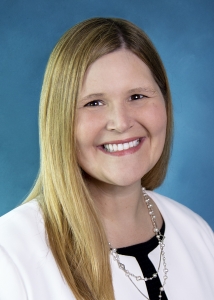By ALICE NUTTALL

There is no one single cause of suicide.
In fact, over half of the people who died of suicide did not have a known mental health condition, according to the Centers for Disease Control and Prevention (CDC).
It is important to remember that it is not just up to mental health professionals, medical providers, and first responders to promote safe and supportive mental environments. Suicide prevention is a conversation and cause that we should all be aware of in the community. Communities can help bring people together so they feel connected and not alone. The CDC and Suicide Prevention Resource Center found significant evidence that connection with others reduces risk of completed suicide. We all have a role to play in reducing social isolation and increasing acceptance of real authentic conversations in our homes, schools, churches, jobs and peer groups on mental health and suicide prevention.
There are 25 attempted suicides for every one suicide, says the CDC. There are a lot of people hurting who at one time have thought, “I wish I could just go to sleep and not wake up again. I wish I were dead.” To have real conversations about mental health with people in genuine everyday moments is something we can all do to help prevent suicide. By “being there” for someone, you have the opportunity to buffer against hopelessness and psychological pain.
You don’t ever know who is struggling, so be prepared with some basic psychological first aid to help someone when they are contemplating the idea of ending their life. What would you say? How would you respond? It may be someone you have known for many years or someone you just met.
Don’t be afraid to ask the question, “Are you thinking about suicide?” This question signals that you are willing to speak about it in a non-judgmental and supportive way. Asking in a direct way can open up good communication and allow you to then ask, “How can I help?” The next thing one can do is to listen. A very important next step in a conversation is to connect the individual at risk with help, either through a medical professional or help line. The online social movement #BeThe1to is all about helping individuals connect to help. You have the opportunity to BE the ONE to reach out and start them on their journey to seek help. Do not hesitate to call a local or national suicide hotline (see numbers below). There are resources at these hotlines and specially trained staff to help both of you.
The last step is to follow up with that individual after your first conversation. Studies by the CDC and Suicide Prevention Resource Center show a reduction in the number of suicide deaths when one has followed up to offer supportive ongoing contact. Connection is key!
The No. 1 thing that a community can do is to advocate healthy conversations on mental health and wellness and highlight that there is treatment and help out there for those suffering. The next thing we can do as a community to prevent suicide is to encourage safe storage of medications and firearms to reduce access among anyone at risk. The majority of suicide attempts are with firearms or medication overdose.
So if you find yourself in the role of the “helper,” you have an important job. Suicide is not inevitable. Hope can happen.
About the Author
Alice Nuttall, MBA, RN, BA, is Director of Behavioral Health for Lakeland Regional Health.
TO LEARN MORE
Crisis hotlines: Peace River Center 24/7 Crisis Line: 863.519.3744, toll free 800.627.5906
National Suicide Prevention hotline: 800-273-8255, for Deaf/Hearing impaired 800-799-4889, Nacional de Prevención del Suicidio 888.628.9454
Veterans Crisis Line: 800.273.8255 or text 838255
National Helpline for Substance Abuse and Mental Health Services Administration: 800.662.HELP (4357)
Crisis Text Line: Text 741741
In a crisis situation, call 9-1-1 or visit the closest Emergency Room.
References:
http://www.sprc.org/comprehensive-approach/social-connectedness
http://afsp.org/about-suicide/suicide-statistics/
http://www.cdc.gov/vitalsigns/suicide/index.html
http://suicidepreventionlifeline.org/
